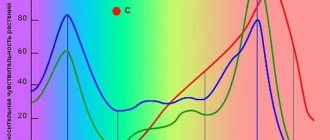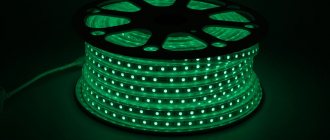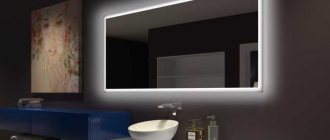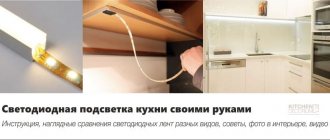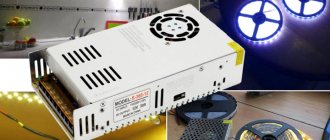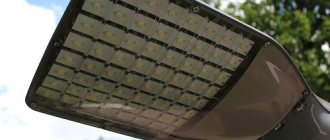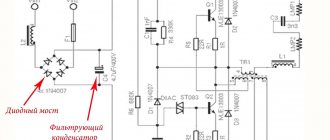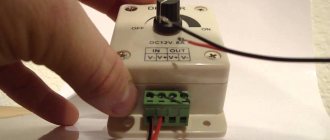New linear light sources, LED strips, use ultra-bright light-emitting diodes (LEDs) as light-emitting devices. The operating voltage of LEDs is several volts. Therefore, a transformer for a 12 volt LED strip is used for power supply.
Often an inexperienced person has questions about what kind of transformer is needed to power LEDs? How to calculate the power of a transformer? Is it possible to make a transformer with your own hands? How to choose a transformer from those available? Is it possible to do without a transformer? In this material the reader will find answers to these and other questions.
Electrical connection
Manufacturers offer LED strips with various parameters for sale. In most cases, the power supply for LED strips is a network providing a voltage of 220 V. But not all LED devices are designed to be connected to a regular outlet. The tapes that are in greatest demand among consumers require a power source with voltage parameters of 12 V or 24 V. If they are connected directly to an outlet, they will not work and may burn out. These devices are designed for a completely different level and type of voltage, and such an LED device must be connected via a transformer. For LED lighting, developers present special transformers for LED strips that provide a stable output voltage.
Interesting material for review: useful information about current transformers.
Connecting the transformer to the power supply.
UPS options
LED strip power supply options
According to their design and performance characteristics, power supplies for LEDs are divided into the following types:
- a compact power supply that looks like a phone charger;
- a small-sized module placed in a rectangular oblong body;
- electronic ballast in a completely sealed box;
- a similar circuit housed in a standard size non-hermetic housing.
The units have low power (30-36 watts), but are quite cheap. The modules have a high power rating (up to 75 watts). Like the first samples, they are designed to work with decorative lighting, but unlike them they have a higher cost.
Electronic ballasts in a completely sealed housing are designed for use in harsh climatic conditions. They are used to illuminate billboards and similar outdoor products. Their non-hermetic analogues, placed in a standard-sized housing, are widely used in everyday life and in work offices. Among modern manufacturers of transformer power supplies, Russian and IPS, as well as foreign “Helvar” and “Mean Well” (Taiwan), are especially popular.
power unit
Installed illuminated advertising using LEDs will require a separate power supply. In our case, such a power supply is called a transformer for an LED strip. This happens because such units (by the way, another common name for such a device is an adapter) initially used transformers. And such devices ensured a constant output voltage. Now, to power LED devices, DC sources are most often used - they are called drivers, or even more complex devices - controllers.
It will be interesting➡ What you need to know about current transformers
But let's return to power supplies. The power supply for the LED strip should be selected taking into account the following parameters:
- voltage;
- power;
- protection from moisture.
The block should be selected for each specific case. The supply voltage of the LED strip must correspond to the values of 12 and 24 V. Therefore, we select a device that is capable of providing the specified voltage. The next point is calculating the required power. To power one meter of LED strip, a very specific amount of power is required. Accordingly, the power of the power supply is selected based on calculations: the power consumed by one meter of tape multiplied by the total length of the connected segment.
Another 25% is added to this figure for a reserve for unforeseen situations. Often, the selection of a power supply for an LED strip is required taking into account its ability to withstand moisture. If the unit is planned to be installed in a dry room, we choose a conventional device called an interior unit. For installation outdoors or in a room with high humidity levels, you will need a waterproof power supply.
Which class of dust and moisture protection to choose?
We have determined the main parameters of the power supply - voltage and power - all that remains is to choose the type of case that would meet the operating conditions of the device.
If the power supply will operate indoors, then protection from moisture is not so important, but lighting, for example, the facade of a building, of course, will require the purchase of a sealed device. But there are many different types of cases, sometimes the most bizarre ones, so it is quite difficult to assess how reliably a particular power supply is protected from environmental influences by its appearance.
How to choose a device for the conditions in which it will be used? This is simple if you pay attention to the marking, consisting of the letters IP and two numbers. The first of them indicates the class of protection against solids and particles, the second - against moisture
Now let's take a look at the table below.
Table of environmental protection classes according to DIN EN 60529
| 1st digit (protection against solids and particles) | 2nd digit (moisture protection) | ||
| No protection | No protection | ||
| 1 | Protection against penetration of particles larger than 50 mm | 1 | Protection against vertically falling drops |
| 2 | //-//-//-// more than 12 mm and length more than 80 mm | 2 | Protection against drops falling at an angle of 15° from vertical |
| 3 | //-//-//-// more than 2.5 mm | 3 | Protection against drops falling at an angle of 60° from the vertical (rain) |
| 4 | //-//-//-// more than 1 mm | 4 | Protects against splashes from any angle |
| 5 | Protection against ingress of dust in quantities that could interfere with the operation of the device | 5 | Protection against water jets from any direction |
| 6 | Complete protection against dust ingress | 6 | Protection against strong water jets from any direction |
| 7 | Protection against short-term immersion in water up to a depth of 1 m | ||
| 8 | Protection when immersed in water up to a depth of 1 m for a period of no more than 30 minutes | ||
| 9 | Protection against high temperature water jets |
If our power supply will work outdoors or in the bathroom, then, according to the table, we will have to choose a device with a degree of protection of at least IP65, and preferably IP67. Installing in a dusty room? IP54 will do. A dry, clean room, and even sewn under a false panel? Let's choose IP20. Well, if the power supply is built into some other device, then protection is not important at all.
Overview of types and principle of operation
Such devices operate according to a similar scheme: the 220V mains voltage is converted to a lower voltage - 12V. This feature is realized by means of a transformer, which reduces the voltage to the level of 12V. This is the simplest power supply that allows you to connect low-power lighting devices. To install more powerful lamps, power elements designed for 24V, 36V, 48V are used. In addition to the step-down transformer, the design of the unit includes a rectifier, stabilizer and filters (RC or LC).
There are two types of such devices, which differ in the cooling method:
- with passive heat transfer;
- with active cooling system.
In the first case, the power supply can be made in a closed or perforated case, and the heating intensity of the case is reduced through natural cooling.
Interesting reading: facts about step-down transformers.
The second option includes a fan in the design. Such a unit has very significant disadvantages: the need to regularly clean the device, since the fan pumps in quite a lot of dust, and, in addition, during operation, an obsessive noise is heard, which does not always suit the owner of the room. There are different versions of the power supply unit for the LED strip, different in size. If you plan to install decorative low-power lighting, you can use a compact version.
In addition, the market offers models of devices that differ in the material from which the body is made: plastic, aluminum. The main difference is the set of functions:
- providing power to the light source;
- devices with built-in dimmer;
- possibility of remote control;
- Full-featured devices: with dimmer and remote control function.
The power range of such equipment can vary from 4 to 2,000W. If you plan to install the lighting in a room with a high level of humidity, use a special type of power supply - a moisture-proof one.
Classification of LED strips
The wide variety of single-color LED strips has led to their classification according to several main criteria. These criteria will be described below.
Classification of transformers for lighting.
By type of LEDs used
The main distinguishing feature of LED strips is the type of diodes used in the manufacture of the product. Basically, single-color LED strips are produced on the basis of SMD 3528 and SMD 5050 diodes. The abbreviation SMD means that this electronic component is designed for mounting on the surface of a printed circuit board. Full marking also includes the dimensions of the product in millimeters: for example, the SMD 3528 LED has a length of 3.5 mm and a width of 2.8 mm.
It will be interesting➡ What is a traction substation
By LED density
LED strips are also divided by the number of elements (diodes) used in one meter of strip, which in technical circles is called density. It is worth noting that the number of LEDs used in the manufacture of one meter of strip affects the total power of the product, as well as its light indicators (degree of illumination). The denser the LEDs are, the more of them can be placed on a piece of tape and the brighter the light will be. Calculation of LED strip power parameters is presented in the table below.
Table for calculating power parameters for LED strip.
By power
The power of LED strips, like other radio products or equipment, is measured in watts (W). The value of this parameter is determined by the dimensions of the diodes and their density. For example, a typical LED strip made from SMD 3528 consumes:
- 4.8 W if 60 diodes are installed on each meter;
- 9.6 W, if the LED density is twice as high - 120 diodes per meter;
- 19.2 W, if the diodes are in two rows, and their total number per meter is 240 pcs.
For SMD 5050 based tape, the power consumption will change as follows:
- 30 diodes/meter - 7.2 W;
- 60 diodes/meter - 14.4 W;
- 120 diodes/meter - 28.8 W.
It's not difficult
Please note that for the same type of strip, power consumption is directly proportional to the number of installed LEDs. This is understandable - each diode consumes one
the number of watts.
Features of transformer installation
The transformer is installed according to the block diagram that comes with the LED strips. As a rule, they are cut into groups containing three LEDs. The design includes a current limiting resistor . However, in some cases there may be 5-10 pieces in one area.
The cutting location is indicated by groups of contacts on both sides. The connection is made in parallel to the groups. Where exactly the transformer will be installed does not matter. However, the polarity of + and - is important. Please note that the power supply voltage should not be more than 12 volts .
Many people make the mistake of using transformers designed for halogen lamps. Even though they also reduce the voltage to 12 volts, the difference between them is significant. The fact is that they use alternating current at the output, while LED strips require constant current to operate.
Key selection parameters
To select a power supply for an LED strip, you need to pay attention to several basic technical characteristics of such devices:
- the voltage level at the output of the block must correspond in value to the light source that will be connected;
- the power value of the device; to determine the design suitable for the load, a simple calculation should be performed;
- degree of protection;
- the need for additional functions in the block.
When deciding which power supply to choose, it is recommended to take into account its cost. Moisture-proof versions will cost more. Pricing is also affected by the level of power and voltage. The simplest option can be bought for 200 rubles. (protection level IP20), expensive versions can be found at a maximum price of up to 5,000 rubles. (waterproof housing, 250W).
Calculation of sufficient power value
In order not to make a mistake and select the power supply element for the LED strip with the required parameters, you should first determine the total length of the light source, which is influenced by the size of the illuminated room. In the technical specifications, the manufacturer indicates the power value of a section of strip 1 m long. Accordingly, to determine the maximum load level on the power supply, you should multiply the total length of the tape by the power of 1 m. Additionally, you need to add 15-20% to the resulting value.
Thus, the power supply allows the connection of LED light sources. But in addition to the main function - power supply, such devices also solve other problems, for example, they protect the lighting device from power surges thanks to the built-in stabilizer. In order not to make a mistake when purchasing, you need to calculate the power value. The main parameters that are used when calculating the power of the power source are: linear power consumed per 1 meter of tape (Ribbon), the number of diodes at the same distance and output voltage 12/24 V.
It will be interesting➡ Idle mode for transformers
Let's carry out power calculations using the example of an SMD 3528 LED strip with a length L = 6 m (60 diodes/m and P strip = 4.8 W/m) and a supply voltage of 12 V. According to the calculation results, it turned out that this entire strip consumes Ppot = 28.8 Tue. For greater clarity, let’s duplicate the previous calculation here: Pconsumption = Ribbon × L = 4.8 W/m × 6 m = 28.8 W. To ensure that the power supply does not overheat, the power should be calculated with a margin (a margin of 33% is taken). Let's use the formula: PBP= Ppot+33%=28.8+9.54=38.3 W.
Based on the calculation, we select a power supply from the standard line of the manufacturer of interest, for example, 40 W. Using similar formulas, we calculate the power for the SMD 5050 120 LED strip (120 diodes per meter). This product has the following parameters:
- Tapes=28.8 W;
- density 120 diodes/m;
- supply voltage 24 V;
- tape length L = 2.5 m.
Let's assume that we cut the required amount from the standard length of 5 m). Pconsumption = Tape × L = 28.8 W/m × 2.5 m = 70.2 W. PBP= Ppot+33%=70.2+23.16=93.4 W. In this case, choose a 100 W power supply. It is worth noting that using these formulas, you can easily and simply calculate the power of the power supply for LED strips with any parameters.
Connecting an LED strip to one power supply
Most often, an LED strip is a solid five-meter piece that is wound on a plastic reel. As a rule, from the outside - on the end that is not wound on the reel - the wires necessary for connecting to the power supply are connected to the tape.
If after purchase you find that there are no connecting wires, then you should take any stranded wires of red (“+”) and black (“-”) colors, measure the required length, which should be enough to reach the terminals of the power supply, and solder them, having previously cleaned and tinned both ends. We tin the wires using rosin and tin, and connect them to the tape tracks using soldering.
During the soldering process, you should use a low-power soldering iron and make the connection quickly enough, since there is a possibility that the LEDs may be damaged due to exposure to elevated temperatures. After this, we connect the free ends of the wires (not soldered to the tape) to the power supply, observing the polarity.
Safety precautions
- All installation work is carried out with the power turned off.
- When installing the SDL on a conductive surface, the attachment point is pre-insulated.
- Observe polarity when connecting contacts; multi-colored conductors help with this.
- Do not touch exposed conductive parts while the power is on.
- Do not expose the board to mechanical stress (kinks).
- Follow electrical safety rules when working with 220 V networks.
- Related Posts
- What glow (color) temperature to choose.
- Track lighting system: device, types and ideas
- Incandescent lamp: characteristics and features.


